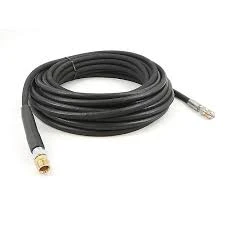Steps for Safely Replacing High Pressure Power Steering Hose in Your Vehicle
How to Remove a High-Pressure Power Steering Hose
Removing a high-pressure power steering hose can often seem intimidating, especially if you're not familiar with automotive repairs. However, with the right tools and some clear guidance, you can complete this task safely and efficiently. This article will provide you with step-by-step instructions on how to remove a high-pressure power steering hose from your vehicle.
Tools and Materials Needed
Before you start, gather the following tools and materials
1. Wrenches A set of various-sized wrenches, including a flare nut wrench if possible. 2. Pliers Needle-nose pliers for clamps and connectors. 3. Container A drain pan to catch any fluid spillage. 4. Rags To clean up any spills and for general use. 5. Safety Goggles To protect your eyes from fluid splashes. 6. Gloves To keep your hands clean and protected. 7. New Hose Replacement high-pressure power steering hose if needed.
Steps to Remove the High-Pressure Power Steering Hose
1. Prepare the Vehicle - Park your vehicle on a flat surface and turn off the engine. Allow it to cool if it has been running, as parts may still be hot. - Engage the parking brake and, if possible, disconnect the battery to avoid any electrical issues.
2. Locate the High-Pressure Hose - Open the hood and locate the power steering assembly. The high-pressure hose typically connects the power steering pump to the steering gear or rack.
3. Drain the Power Steering Fluid - Place a drain pan underneath the power steering pump area to catch any fluid that might drain out when you disconnect the hose. - Use a syringe or turkey baster to remove some fluid from the reservoir to minimize spills.
how to remove high pressure power steering hose

4. Loosen the Hose Fittings - Using the appropriate wrench, carefully loosen the fitting at the power steering pump. Be cautious, as the hose may still contain some fluid. - Once loose, carefully remove the fitting by rotating it counterclockwise. If it requires extra force, ensure you're not forcing it too much, as this could damage the fitting.
5. Remove the Hose from the Steering Box - Next, move to the steering gear, where the other end of the high-pressure hose is connected. Repeat the process of loosening the fitting with a wrench. - Again, be cautious of any residual fluid when removing this fitting.
6. Disconnect and Remove the Hose - After both fittings are removed, gently pull the hose out from its bracket or any retaining clips. Inspect the hose for wear or damage, which could indicate the need for a replacement.
7. Clean Up - Use rags to wipe up any spilled fluid and properly dispose of it according to local regulations. - If you plan to install a new hose, make sure the fitting areas are clean before attaching the new component.
Installation of the New Hose
If you’re installing a new high-pressure power steering hose, simply reverse the removal process
1. Connect the new hose to the power steering pump and tighten the fitting securely. 2. Repeat this for the steering gear side. 3. Refill the power steering fluid reservoir with the recommended fluid type. 4. Reconnect the battery and run the engine to check for leaks and ensure proper steering operation.
Conclusion
Removing a high-pressure power steering hose may seem challenging, but with careful attention and the correct tools, you can accomplish this task effectively. Regular checks and maintenance of your power steering system are essential for keeping your vehicle running smoothly and maintaining safety on the road. Always consult your vehicle's service manual for specific instructions related to your make and model.
-
Ultimate Spiral Protection for Hoses & CablesNewsJun.26,2025
-
The Ultimate Quick-Connect Solutions for Every NeedNewsJun.26,2025
-
SAE J1401 Brake Hose: Reliable Choice for Safe BrakingNewsJun.26,2025
-
Reliable J2064 A/C Hoses for Real-World Cooling NeedsNewsJun.26,2025
-
Heavy-Duty Sewer Jetting Hoses Built to LastNewsJun.26,2025
-
Fix Power Steering Tube Leaks Fast – Durable & Affordable SolutionNewsJun.26,2025

